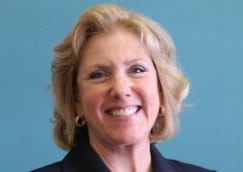As an intern at AYPF this past summer, I had the privilege of contributing to a project that AYPF is planning to publish later this month–Better Together: A Resource Directory for Afterschool Systems Builders accessing resources relevant to their work. I surveyed nearly 80 organizations operating locally, statewide, and nationally to support the development of this publication, cataloging the various research, advocacy, technical assistance, and other resources they offer. My involvement taught me two lessons about organizations that offer resources to afterschool systems builders: they often provide resources on similar topics and rarely have access to catalogs like AYPF’s Directory. The latter point is unfortunate because works like AYPF’s have the potential to be invaluable, not only to supporting networks, but also to the efficiency and organization of resource providers.
As the guide illustrates, it is commonplace for national organizations to support afterschool systems building through the same services and within the same locales as other local, statewide, and national nonprofits. Those that operate nationally and offer the same types of services often do not coordinate their efforts, partly because they consider their missions unique but also because they have neither the capacity nor resources to regularly communicate with other organizations that carry out similar work. Consequently, nonprofits that seek to support afterschool systems may operate inefficiently and with a lack of coherence. As such, the Directory, beyond its value to systems builders seeking resources, is additionally valuable for the following reasons:
- It enables national organizations working in the afterschool field the opportunity to see how other organizations carry out their work at similar and different scales.
- It shows all players involved in systems building work what resources may be lacking.
- It shows all players involved in systems building work what resources may be abundant.
Informing National Organizations That Support Afterschool
Many systems resource providers offer services and materials that are already available through other organizations. The Directory reveals this overlap by cataloging what types of resources are accessible within a community at any given scale–national, statewide, and local. Accounting for an array of the nonprofits that offer these services benefits the national organizations that support afterschool–especially those which do so in a multitude of ways–because it helps them recognize what types of assistance they can defer to other organizations to provide, and which resources they should specialize in offering. The Directory may even yield the information necessary for public servants working on developing afterschool systems at all levels to have a discussion about which resources ought to be accessible for communities locally, at the state level, or nationally.
Revealing Resource Voids
For nascent nonprofits, state governments, and community groups, the Directory also offers all players involved in systems-building efforts a glimpse of what services are potentially unavailable within a particular community. In cataloging what types of resources are already accessible for systems builders in a school district and at what scale, the Directory consequently shows what resources are also lacking. More than just guiding existent nonprofits to avoid overlap and operate more efficiently, this utility of the Directory directs current and future organizations to address systemic needs.
Highlighting Resource Abundances
Moreover, communities can use the Directory to determine what services are abundantly available for building afterschool systems within their localities. This enables nonprofit planners, municipalities, and advocacy groups to recognize where investments in afterschool systems-building overlap and where they could be redeployed. Upon reviewing AYPF’s Resource Directory, any of these players will come away with a sense of what resources are amply accessible locally, statewide, and nationally–information that is invaluable to any larger systemic effort to bolster efficient and organized afterschool access for children. And it demonstrates the deep commitment by many nonprofit providers to support afterschool activities.
Implications for Systems Builders and the Nonprofits that Support Them
The overlap of resource providers that serve afterschool systems builders reveals that many nonprofit organizations do not yet see themselves as part of a larger coordinated effort. Given this reality, products like AYPF’s Directory are incredibly relevant, especially given the growing tendency of nonprofits fulfilling services that centralized municipalities may have managed in the past. In order for afterschool service providers and the organizations that support them to do their work in an effective, coordinated way, it will be imperative for groups like AYPF (and their hardworking interns) to produce works like the AYPF’s Resource Directory in the future.
Andy Keefe was a 2014 Summer Policy Intern. Be on the lookout for the Better Together Field Guide in September 2014.






